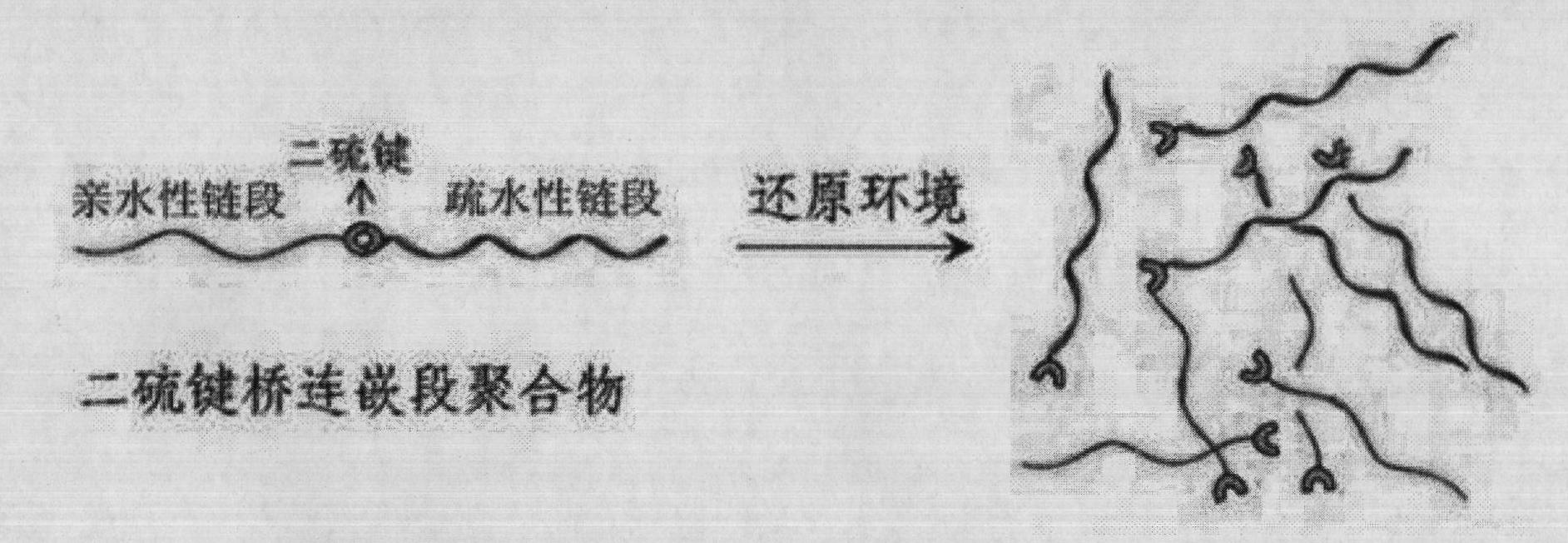Shell layer dropping type nanometer medicine carrier preparation based on amphiphilic block copolymer and preparation method thereof
A nano-drug carrier and amphiphilic block technology, which is applied in the fields of polymer materials and medical engineering, can solve the problems of repeated administration, affect the curative effect, and low drug bioavailability, and achieve prolonging blood circulation time and improving biological Utilization, to achieve the effect of localized release
- Summary
- Abstract
- Description
- Claims
- Application Information
AI Technical Summary
Problems solved by technology
Method used
Image
Examples
Embodiment 1
[0034] Example 1 Preparation of Nano-drug Carrier Preparation Based on Amphiphilic Copolymer
[0035] Weigh 50 mg of triblock copolymer of polyethylene glycol and polycaprolactone and 10 mg of paclitaxel, dissolve in 60 mL of tetrahydrofuran, and ultrasonicate for 10 min at room temperature to fully disperse and dissolve the polymer and drug to form a transparent organic phase; The obtained organic phase solution was placed in a dialysis bag, and then dialyzed in 1 L of water for 24 hours, and the dialysate was changed every 3 hours. After the dialysis, the aqueous solution of drug-loaded micelles formed in the dialysis bag was collected, and then freeze-dried for 20 hours to obtain a powdery solid preparation. The particle size distribution of the particles was measured with a dynamic laser light scattering instrument, and the polydispersity was 0.041. The TEM photos show that the average particle size of the nanoparticles is 92nm, the particles are spherical, and the disper...
Embodiment 2
[0036] Example 2 Preparation of Nano-Drug Carrier Preparation Based on Amphiphilic Copolymer
[0037] Weigh 30 mg of a two-block copolymer of polyethylene glycol and polyleucine and 8 mg of doxorubicin, dissolve it in a mixed solvent of 20 mL of N,N-dimethylformamide and 20 mL of tetrahydrofuran, and sonicate at room temperature for 10 min to polymerize Drugs and drugs are fully dispersed and dissolved to form a transparent organic phase; the prepared organic phase solution is placed in a dialysis bag, then dialyzed in 500 mL of water for 30 hours, and the dialysate is changed every 4 hours. After the dialysis, the aqueous solution of drug-loaded micelles formed in the dialysis bag was collected, and then freeze-dried for 24 hours to obtain a powdery solid preparation. The particle size distribution of the particles was measured with a dynamic laser light scattering instrument, and the polydispersity was 0.107. The TEM photos show that the average particle size of the nanopar...
Embodiment 3
[0038] Example 3 Preparation of Nano-Drug Carrier Preparation Based on Amphiphilic Copolymer
[0039] Weigh 80mg of a diblock copolymer of poly-N-isopropylacrylamide and polycaprolactone and 20mg of camptothecin, dissolve it in 100mL of N,N-dimethylformamide, and ultrasonicate for 15min at room temperature to make the polymer and The drug is fully dispersed and dissolved to form a transparent organic phase; the prepared organic phase solution is placed in a dialysis bag, and then dialyzed in 1.5L of water for 48 hours, and the dialysate is changed every 2.5 hours. After the dialysis, the aqueous solution of drug-loaded micelles formed in the dialysis bag was collected, and then freeze-dried for 18 hours to obtain a powdery solid preparation. The particle size distribution of the particles was measured with a dynamic laser light scattering instrument, and the polydispersity was 0.063. The TEM photos show that the average particle size of the nanoparticles is 84nm, the particle...
PUM
| Property | Measurement | Unit |
|---|---|---|
| Particle size | aaaaa | aaaaa |
| The average particle size | aaaaa | aaaaa |
| The average particle size | aaaaa | aaaaa |
Abstract
Description
Claims
Application Information
 Login to View More
Login to View More - R&D
- Intellectual Property
- Life Sciences
- Materials
- Tech Scout
- Unparalleled Data Quality
- Higher Quality Content
- 60% Fewer Hallucinations
Browse by: Latest US Patents, China's latest patents, Technical Efficacy Thesaurus, Application Domain, Technology Topic, Popular Technical Reports.
© 2025 PatSnap. All rights reserved.Legal|Privacy policy|Modern Slavery Act Transparency Statement|Sitemap|About US| Contact US: help@patsnap.com



